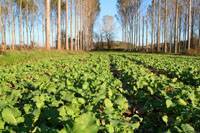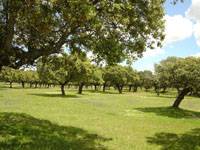Behaviour and Ecology
@ School of Life Sciences,
University of Nottingham
| Home | People | Research | Teaching | Publications | Opportunities | Links |
 Forest Ecology - Markus Eichhorn
Forest Ecology - Markus Eichhorn
One of the great mysteries of ecology is how so many species are
maintained in tropical rain forests. More tree species can be found in a single
hectare of rain forest in Borneo than in the whole of Europe or
The BITRF (Biological Interactions in
Tropical Rain Forests) project was established to investigate the influences of
many factors on the growth and survival of trees seedlings in
Within this project, Markus Eichhorn is investigating the interactions between tree seedlings and their insect herbivores. This includes the effects that herbivores have upon the seedlings, in terms of their rates of damage, growth and survival, but also how characteristics of the seedlings such as their defences (chemical and mechanical) and nutritional value influence the communities of insect herbivores and their feeding.
Results have indicated that rates of herbivory vary little within tree species, regardless of where they grow, but can differ widely between species. Levels of defensive chemicals seem to be the main determinants of herbivory rate rather than leaf toughness or nutritional content. Contrary to the traditional view of complex insect herbivore assemblages in tropical rain forests, it would appear that the majority of damage is caused by a limited number of generalist herbivores in this system.
Project website (somewhat out of date)
BITRF was funded by the British Ecological Society
Some useful references:
Eichhorn M.P., Fagan K.C, Dent D.H.,
Eichhorn M.P., Compton S.G. and Hartley S.E. (2006). Seedling species determines rates of leaf herbivory in a Malaysian rain forest. Journal of Tropical Ecology, 22, 513-519.
See also Spatial community ecology.
Agroforestry in Europe
 Many systems of farming with trees have existed in Europe for
thousands of years, including the dehesas
of south-western
Many systems of farming with trees have existed in Europe for
thousands of years, including the dehesas
of south-western
Above right: An experimental agroforestry system at
 Below right: A dehesa landscape in Extremadura,
Below right: A dehesa landscape in Extremadura,
For more information, see the SAFE (Silvoarable Agroforestry For
Europe) website.
The SAFE project was funded by the EU under its Quality of Life programme.
A useful reference:
Eichhorn M.P., Paris P., Herzog F., Incoll L.D., Liagre F.,
Mantzanas K., Mayus M., Moreno G., Papanastasis V.P., Pilbeam D.J., Pisanelli
A. and Dupraz C. (2006). Silvoarable systems in
